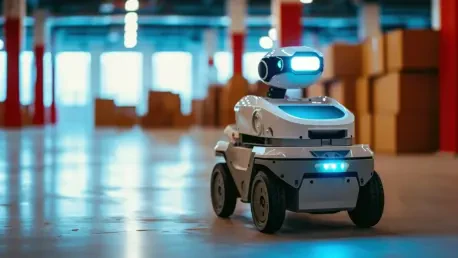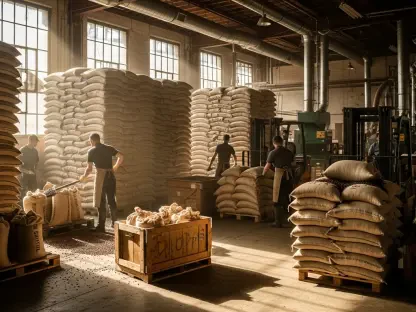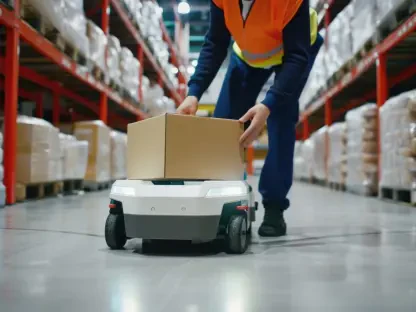Meet Rohit Laila, a seasoned veteran in the logistics industry with decades of experience spanning supply chain and delivery. With a deep passion for technology and innovation, Rohit has witnessed firsthand the transformative power of automation and robotics in reshaping the sector. Today, we dive into his insights on the groundbreaking advancements in Autonomous Versatile Robotics (AVR), the role of AI in modern logistics, and how these innovations are making warehouses smarter and more adaptable than ever before.
How did your journey in logistics lead you to focus on the intersection of technology and automation?
I’ve been in the logistics game for over 30 years, starting with the nuts and bolts of supply chain management. Early on, I saw how manual processes bogged down efficiency—whether it was inventory tracking or last-mile delivery. As technology evolved, I became fascinated by how automation could solve those pain points. Robotics, in particular, caught my eye about 15 years ago when I worked on a project integrating early robotic systems into a distribution center. That experience showed me the potential to revolutionize the industry, and I’ve been hooked on pushing the boundaries of innovation ever since.
What excites you most about the concept of Autonomous Versatile Robotics in today’s logistics landscape?
AVR is a game-changer because it moves robotics beyond rigid, repetitive tasks into a space where machines can think on their feet. In logistics, where you’re dealing with unpredictable variables—new product types, sudden layout changes in a warehouse, or fluctuating demand—these robots can adapt in real time. What excites me is how this technology, powered by AI, allows a robot to handle a completely new pallet setup without someone needing to reprogram it. It’s about creating systems that are as dynamic as the environments they operate in, and that’s huge for efficiency.
Can you break down how AI is transforming robotics from traditional systems to something more adaptive in warehouses?
Absolutely. Traditional robotics relied on predefined paths and tasks—think of a robotic arm on an assembly line doing the same motion over and over. If anything changed, like a product’s position, the system would stall until someone intervened. With AI, especially generative AI, robots now have enhanced vision and decision-making capabilities. They can scan an unfamiliar object, figure out how to pick it up, and even plan a new path around obstacles. In a warehouse, this means handling high variability in inventory or unexpected disruptions without grinding to a halt. It’s like giving robots a brain to problem-solve on their own.
What kind of impact do you see AI-driven vision systems having on the day-to-day operations of logistics facilities?
Vision systems powered by AI are a massive leap forward. They let robots “see” and interpret their surroundings in ways that were impossible a decade ago. For instance, in a busy logistics hub, these systems can identify and handle products of different shapes, sizes, or packaging without needing specific programming for each item. This cuts down on errors and speeds up processes like sorting or packing. More importantly, it reduces the need for constant human oversight, allowing staff to focus on higher-value tasks while the robots handle the grunt work with precision.
How do you think advancements in usability are changing the way warehouse teams interact with robotic systems?
Usability is everything when it comes to adoption. In the past, operating advanced robotics often required specialized engineers on-site, which was a barrier for many facilities, especially smaller ones. Now, with user-friendly platforms and pre-trained algorithms—or what some call ‘skins’—warehouse staff with minimal tech background can set up and tweak these systems. Imagine a floor manager using a smartphone to snap a few photos of a new product layout, and the robot instantly adjusts. This simplicity not only saves time but also empowers teams to embrace automation without feeling overwhelmed.
What challenges have you encountered when adapting robotics to the often chaotic and unstructured environments of logistics?
Logistics environments are rarely neat and tidy. Warehouses can be chaotic with multiple product types, fast inventory turnover, and layouts that change on a dime. One of the biggest challenges has been teaching robots to navigate this unpredictability. Early systems struggled with anything outside their programmed scope—if a box was slightly off-position, they’d fail. Developing sensing and perception capabilities to handle these variables took a lot of trial and error. Then there’s the human factor—ensuring robots can safely coexist with workers in tight, busy spaces. It’s a balancing act between flexibility, safety, and reliability.
How do you see the reduced setup time and cost of modern robotics impacting smaller businesses in the logistics sector?
The drop in setup time and cost is a lifeline for smaller businesses. Traditionally, integrating robotics meant months of planning, custom coding, and hefty investments—something only big players could afford. With modern systems, where much of the groundwork is pre-built into the technology, smaller warehouses or integrators can get up and running quickly and at a fraction of the cost. This levels the playing field, letting them compete with larger operations by boosting efficiency without breaking the bank. It’s democratizing access to cutting-edge tools, which I find incredibly exciting.
Looking back on your experience, what lessons from past automation projects have shaped your perspective on the future of robotics in logistics?
One key lesson from past projects, especially early AI implementations in logistics, is that technology alone isn’t enough—it has to be practical and scalable. I worked on a project in the clothing sector years ago where we achieved near-perfect picking accuracy with AI-driven robots, but it required constant expert intervention. That taught me the importance of building systems that are industrial-ready and easy to deploy at scale. Another lesson is the value of adaptability; environments change, and robots need to keep up. Those early challenges have directly influenced how I view today’s push for versatile, user-friendly solutions like AVR.
What is your forecast for the role of AI and robotics in the future of logistics over the next decade?
I believe we’re just scratching the surface of what AI and robotics can do in logistics. Over the next decade, I expect robots to become even more autonomous, seamlessly integrating with other smart systems like IoT for real-time data sharing across supply chains. We’ll see them tackle even more complex tasks—think end-to-end warehouse management or predictive maintenance. Accessibility will continue to improve, making these tools commonplace even in smaller operations. Ultimately, I foresee a future where human-robot collaboration is so intuitive that the line between manual and automated processes blurs, driving unprecedented efficiency and innovation.









